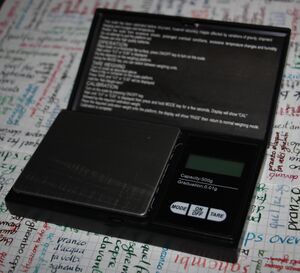Filling systems capacity
One of the criteria with which the filling system is chosen, especially in recent pens, is that of its capacity. It is also one of the criteria on the basis of which we most frequently take sensational dazzles, also because there is a widespread prejudice that a piston filling pen contains much more ink than a cartridge filling one, which, with pens on the market today, is almost never true.
The following table of cartridge capacity is used as a reference (the measures mentioned have been collected on the internet, and have not yet been verified with the methodology adopted later; when they will be, the relevant column will be updated):
| Brand | Type | Capacity | Verified |
|---|---|---|---|
| Pelikan | short | 0,77 ml | no |
| Parker | long | 1.47 ml | no |
| Sheaffer | slim | 1.20 ml | no |
| Sheaffer | standard | 1.50 ml | no |
| Internazional | long | 1.66 ml | no |
For this reason it was decided to start a collection of measures of the actual ink capacity of pens, but for a measure to qualify as such (and not be reduced to a simple statement), it must be repeatable, so in addition to the results of the same, the methodology used to obtain it must also be detailed.
The measurements have been carried out using a scale with sufficient precision, capable to appreciate the hundredth of a gram, first weighing the pen completely discharged, washed and totally dried (to avoid even the small error possibly introduced by the remaining ink in the feeder) and then loaded with water. For a comparison that takes into account the liquid remaining in the feeder, the weight was measured several times starting from the first empty and dry loading, repeating the loading and unloading cycles.
Si sono misurati più volte (almeno 10) sia il peso a penna carica, che a penna scaricata, quest'ultimo serve per stimare quanto liquido resta nel conduttore, ma si è presa come indicazione della capacità del caricamento il valore rispetto alla penna carica, perché le penne si caricano una volta che l'inchiostro è finito e non arriva più al pennino, e questo comprende anche quello presente nel conduttore. Dalle varie misure si è ottenuto media e deviazione standard.
Si è poi determinata la capacità in ml utilizzando il peso specifico dell'acqua che è 0,997 g/ml. La differenza fra acqua di rubinetto e acqua pura è al di sotto dei limiti apprezzabili della misura in centigrammi, ed inessenziale per la misura la cui precisione è di ±0,02 ml (somma dell'errore sistematico della bilancia per la differenza fra due misure, di 0,01 g), per la conversione comunque si può sostanzialmente assumere una equivalenza di 1 g => 1 ml essendo la differenza al di sotto dell'errore di misura.
| Penna | Tipo | Vuota | Carica | Scaricata | Capacità |
|---|---|---|---|---|---|
| Pelikan 140 | stantuffo | 14,33 ± 0,01 g | 15,98 ± 0,04 g | 14,59 ± 0,03 g | 1.65 ± 0,05 ml |
| Duofold De Luxe | pulsante | 22,10 ± 0,01 g | 24,00 ± 0,03 g | 22.35 ± 0,03 g | 1.90 ± 0,04 ml |
| Deco Band | levetta | 22,82 ± 0,01 g | ± g | ± g | ± ml |
